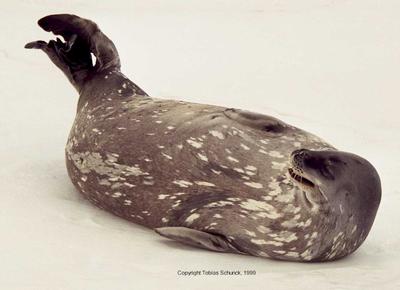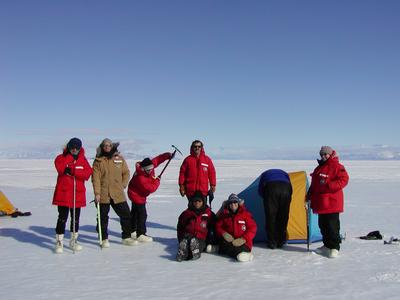
|
|
26 November, 2001
Temp. -1 C, +30 F
wind chill -7 C, +20 F
We spent today at our second ice hole working with the divers and taking sediment and water samples. At this new spot in Ross sea, the ice was 10 feet deep. As before, the divers had gotten a hole drilled and the hut tent moved to the new hole. The divers went down first to collect the sediment samples and later we took water samples.
Before leaving the ice to go back to our lab, we saw a seal on the ice near our first ice hole. We went to investigate. The seal apparently was not afraid of us being there and continued to relax. We were told in sea ice school that it is a major offense in Antarctica to disturb the wild life. So we did not get very close. If we had seen any signs of the seal being agitated, we would have to leave immediately. fortunately this seal did not appear to be disturbed at all.
After leaving the ice, we went back to the lab and procedured to sort and work up our samples. One of the test done on the samples is the test for E Coli. The presence of E Coli in the soil would indicate the presence of human waste. The amount of E Coli would give us some idea of the level of human waste contamination at this site.

Question of the Day: How can you tell a female seal from a male seal?

I'm still waiting for responses to yesterday's question of the day: Why do you think we are advised not to wear cotton clothing when going out on the ice for long periods of time?
Contact the TEA in the field at
.
If you cannot connect through your browser, copy the
TEA's e-mail address in the "To:" line of
your favorite e-mail package.
|
